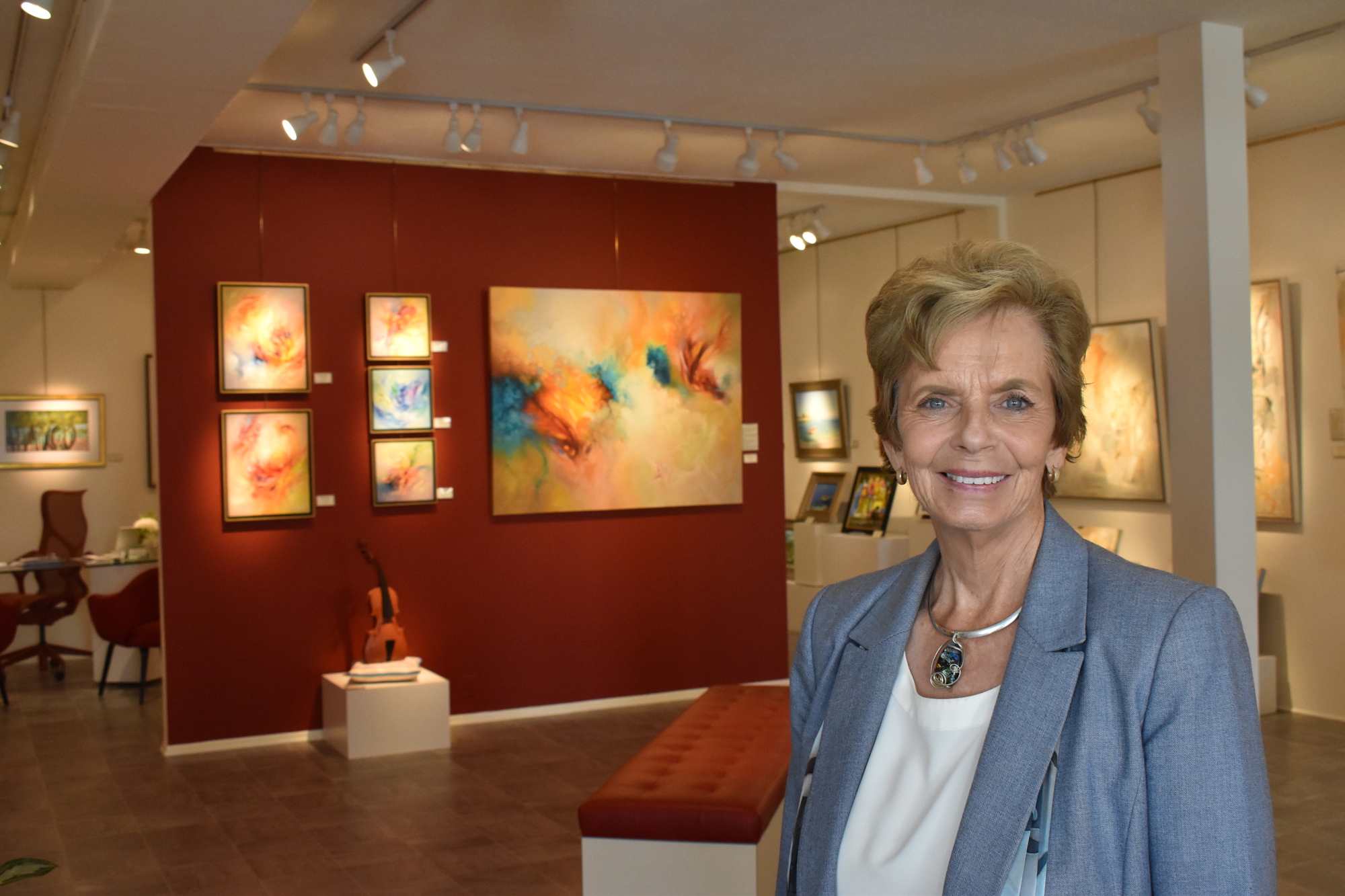- November 23, 2024
-
-
Loading

Loading

The rapidly changing narrative of the precautions being taken in response to concerns about the spread of COVID-19 has affected all aspects of the community. Within the arts and entertainment sector, though, the effects have been decidedly tipped.
With most large public gatherings being canceled, local entertainment has taken a direct hit; every theater has had to decide whether to shut down and, if so, for how long.
For art galleries, it’s a different story. Most of the time, they are not tightly packed gathering places, and with cultural options dwindling for those who still want to be out and about, galleries are getting to be one of the last few games in town.
The question, of course, is for how long.
On Saturday, the first weekend after widespread closures around town, downtown galleries were open for business, pretty much as usual.
Rita Rust was minding the store at Uptown Gallery. Two women came in briefly and happily discussed a few pieces they were interested in with Rust. Then they went off to one side of the gallery for a few minutes before leaving.
This is what it’s been like all day, pretty much what it’s like all the time, Rust says. Unlike at a theater, “you don’t have people sitting row on row. They pretty much come in one at a time, two at a time.” It’s easy to keep your distance.
Rust pulled out a notebook in which they keep an informal count of gallery traffic. Going by the hour-by-hour-count, things had been a slower than — as she flips a couple of pages — a month ago, but not so much that it would be considered out of the norm.
As to whether it will stay that way, that’s the real question.
Uptown Gallery is owned and operated by a group of 28 artists. Monday, Liz Cole, who serves as president of the gallery’s board, said the biggest problem they are facing right now is uncertainty. She says she’s angry at how the sense of emergency escalated so quickly after weeks of government inaction. But the most frustrating aspect is there just seems to be little way to plan ahead.
“I wish I could say we will stay open,” Cole says. “Everything is day to day.”
The situation is especially stressful because it is unprecedented, Cole says. There is no prior experience to draw from. It’s not even like a hurricane. This is open-ended, and there’s no telling when the “eye” will pass through this situation.
In a sense, staying open really isn’t the gallery’s choice, Cole says. If the governor orders restaurants and bars to close, that’s it for foot traffic, which is essential.
Even if they have to shut down, Cole says, they plan to rotate the artwork in their front window displays, with contact information for passersby who see something they like.
In a way, we’re lucky to be living in the times we are, Cole says. Even a decade or two ago, we wouldn’t have had the means to stay as connected as we have today.
For the time being, art galleries are one of the few remaining options to get a cultural fix. And it might be one of the safest, adds Pat Dabbert, co-owner of Dabbert Gallery, so long as galleries don’t hold any big events, such as receptions.

“I don’t think the First Friday gallery walk in April is going to happen,” Dabbert says, referring to the monthly downtown event. During one of those, 300-400 people might drift in and out in a short time.
But, just as at Uptown Gallery, Dabbert says, think about when you go into a gallery. At any given time, there might be a couple other people in there, usually on the other side of the room. Even two people discussing a painting tend to stand a few feet apart.
Another thing to consider, Dabbert says, as opposed to going to a store or something, what’s the No. 1 rule at every art gallery? Don’t touch.
Down the street, Mila Bloch says she actually had an uptick in customers at her Papillon Studio, where she offers custom-made jewelry and original artwork. It doesn’t surprise her. Gallery-hopping isn’t like regular shopping, Bloch says. It’s a form of entertainment.
“They come, [and] they enjoy,” Bloch says, “There is no charge. They ask about the artist. They think about whether it will fit their environment. They love to learn how certain things are done. They always ask questions, like the history of the stone or who is the designer.”
That engagement, that sparking of the imagination, that’s a big part of going to a gallery, Bloch says, whether it’s all artwork or a gallery like hers, where much of the art is of the wearable kind.
People need that, Bloch says. It isn’t just about the sale. It’s the whole process.
And if someone tries on a piece of jewelry and doesn’t buy it?
“Simple,” Bloch says, holding up a spray bottle and a handful of wipes.